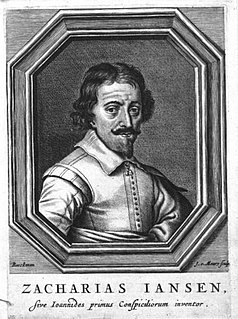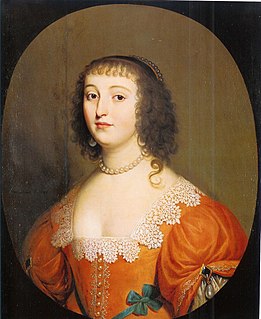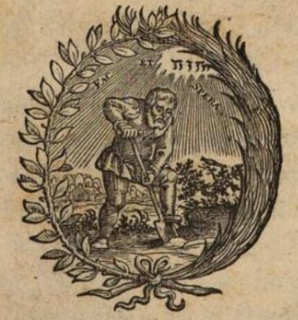Related Research Articles

René Descartes was a French philosopher, mathematician, scientist and lay Catholic who invented analytic geometry, linking the previously separate fields of geometry and algebra. He spent a large portion of his working life in the Dutch Republic, initially serving the Dutch States Army of Maurice of Nassau, Prince of Orange and the Stadtholder of the United Provinces. One of the most notable intellectual figures of the Dutch Golden Age, Descartes is also widely regarded as one of the founders of modern philosophy and algebraic geometry.

Christiaan Huygens, Lord of Zuilichem, was a Dutch mathematician, physicist, astronomer and inventor, who is regarded as one of the greatest scientists of all time and a major figure in the scientific revolution. In physics, Huygens made groundbreaking contributions in optics and mechanics, while as an astronomer he is chiefly known for his studies of the rings of Saturn and the discovery of its moon Titan. As an inventor, he improved the design of telescopes and invented the pendulum clock, a breakthrough in timekeeping and the most accurate timekeeper for almost 300 years. An exceptionally talented mathematician and physicist, Huygens was the first to idealize a physical problem by a set of parameters then analyse it mathematically, and the first to fully mathematize a mechanistic explanation of an unobservable physical phenomenon. For these reasons, he has been called the first theoretical physicist and one of the founders of modern mathematical physics.

Franciscus van Schooten was a Dutch mathematician who is most known for popularizing the analytic geometry of René Descartes.

Marin Mersenne was a French polymath whose works touched a wide variety of fields. He is perhaps best known today among mathematicians for Mersenne prime numbers, those which can be written in the form Mn = 2n − 1 for some integer n. He also developed Mersenne's laws, which describe the harmonics of a vibrating string, and his seminal work on music theory, Harmonie universelle, for which he is referred to as the "father of acoustics". Mersenne, an ordained Catholic priest, had many contacts in the scientific world and has been called "the center of the world of science and mathematics during the first half of the 1600s" and, because of his ability to make connections between people and ideas, "the post-box of Europe". He was also a member of the Minim religious order and wrote and lectured on theology and philosophy.
The mechanical philosophy is a form of natural philosophy which compares the universe to a large-scale mechanism. The mechanical philosophy is associated with the scientific revolution of Early Modern Europe. One of the first expositions of universal mechanism is found in the opening passages of Leviathan by Hobbes published in 1651.
The year 1637 in science and technology involved some significant events.

Zacharias Janssen; also Zacharias Jansen or Sacharias Jansen; 1585 – pre-1632) was a Dutch spectacle-maker who lived most of his life in Middelburg. He is associated with the invention of the first optical telescope and/or the first truly compound microscope, but these claims may be fabrications put forward by his son.
Isaac Beeckman was a Dutch philosopher and scientist, who, through his studies and contact with leading natural philosophers, may have "virtually given birth to modern atomism".

Elisabeth of the Palatinate, also known as Elisabeth of Bohemia, Princess Elisabeth of the Palatinate, or Princess-Abbess of Herford Abbey, was the eldest daughter of Frederick V, Elector Palatine, and Elizabeth Stuart. Elisabeth of the Palatinate was a philosopher best known for her correspondence with René Descartes. She was critical of Descartes' dualistic metaphysics and her work anticipated the metaphysical concerns of later philosophers.

Paul Tannery was a French mathematician and historian of mathematics. He was the older brother of mathematician Jules Tannery, to whose Notions Mathématiques he contributed an historical chapter. Though Tannery's career was in the tobacco industry, he devoted his evenings and his life to the study of mathematicians and mathematical development.

Martin (Maarten) van den Hove was a Dutch astronomer and mathematician. His adopted Latin name is a translation of the Dutch hof ("garden"), in Latin horta.

Pierre de Fermat was a French mathematician who is given credit for early developments that led to infinitesimal calculus, including his technique of adequality. In particular, he is recognized for his discovery of an original method of finding the greatest and the smallest ordinates of curved lines, which is analogous to that of differential calculus, then unknown, and his research into number theory. He made notable contributions to analytic geometry, probability, and optics. He is best known for his Fermat's principle for light propagation and his Fermat's Last Theorem in number theory, which he described in a note at the margin of a copy of Diophantus' Arithmetica. He was also a lawyer at the Parlement of Toulouse, France.

Theodore Haak was a German Calvinist scholar, resident in England in later life. Haak's communications abilities and interests in the new science provided the backdrop for convening the "1645 Group", a precursor of the Royal Society.
Jean-François Niceron was a French mathematician, Minim friar, and painter of anamorphic art, on which he wrote the ground-breaking book La Perspective Curieuse.
Sébastien Basson, Latinized as Sebastianus Basso, was a French physician and natural philosopher of the beginning of the seventeenth century. He was an early theorist of a matter theory based on both atoms and compounds. His natural philosophy draws on several currents of thought, including Italian Renaissance naturalism, alchemy and Calvinist theology. Basson was an atomist, who, independently from Isaac Beeckman, formed the concept of "molecule".
Adequality is a technique developed by Pierre de Fermat in his treatise Methodus ad disquirendam maximam et minimam to calculate maxima and minima of functions, tangents to curves, area, center of mass, least action, and other problems in calculus. According to André Weil, Fermat "introduces the technical term adaequalitas, adaequare, etc., which he says he has borrowed from Diophantus. As Diophantus V.11 shows, it means an approximate equality, and this is indeed how Fermat explains the word in one of his later writings.". Diophantus coined the word παρισότης (parisotēs) to refer to an approximate equality. Claude Gaspard Bachet de Méziriac translated Diophantus's Greek word into Latin as adaequalitas. Paul Tannery's French translation of Fermat’s Latin treatises on maxima and minima used the words adéquation and adégaler.

Henricus Reneri or Renerius was a Dutch philosopher.

Pierre de Carcavi was born in about 1603, in Lyon, France and died in Paris in April 1684. He was a secretary of the National Library of France under Louis XIV. Carcavi was a French mathematician.

The Search for Truth by Natural Light is an unfinished philosophical dialogue by René Descartes “set in the courtly culture of the ‘honnête homme’ and ‘curiosité’.” It was written in French but first published in Dutch translation in a collection of letters from Descartes by JH Glazemaker, and then in a Latin translation in the Opuscola posthuma, physica & mathematica. The original French was lost around 1700 but a partial copy was discovered in G.W. Leibniz's papers in Hanover in 1908 and published in the Adam-Tannery edition of Descartes's works and correspondence. A definitive edition, containing the partial French text plus the fuller Dutch and Latin translations on facing pages was published in 2002.